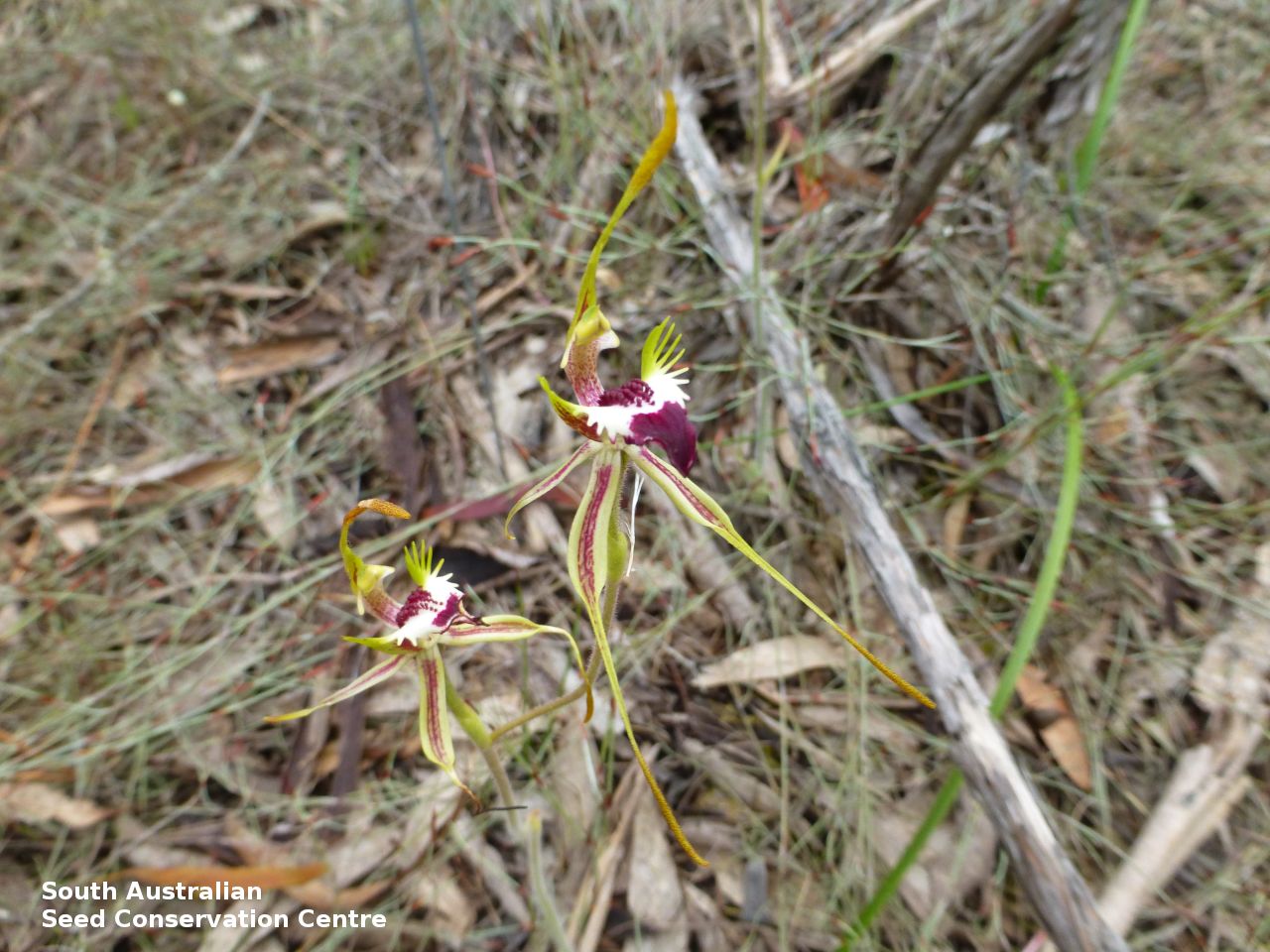
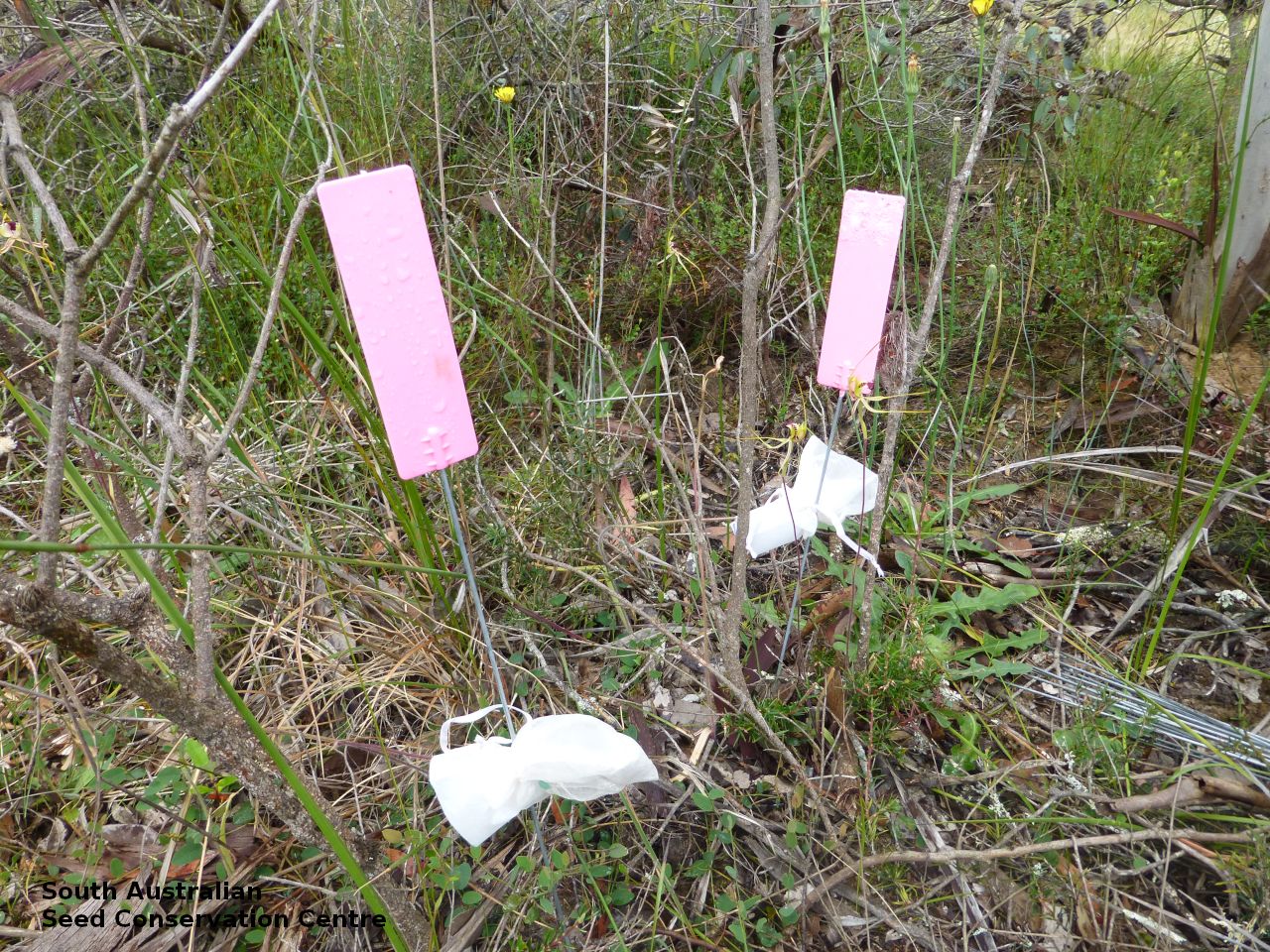
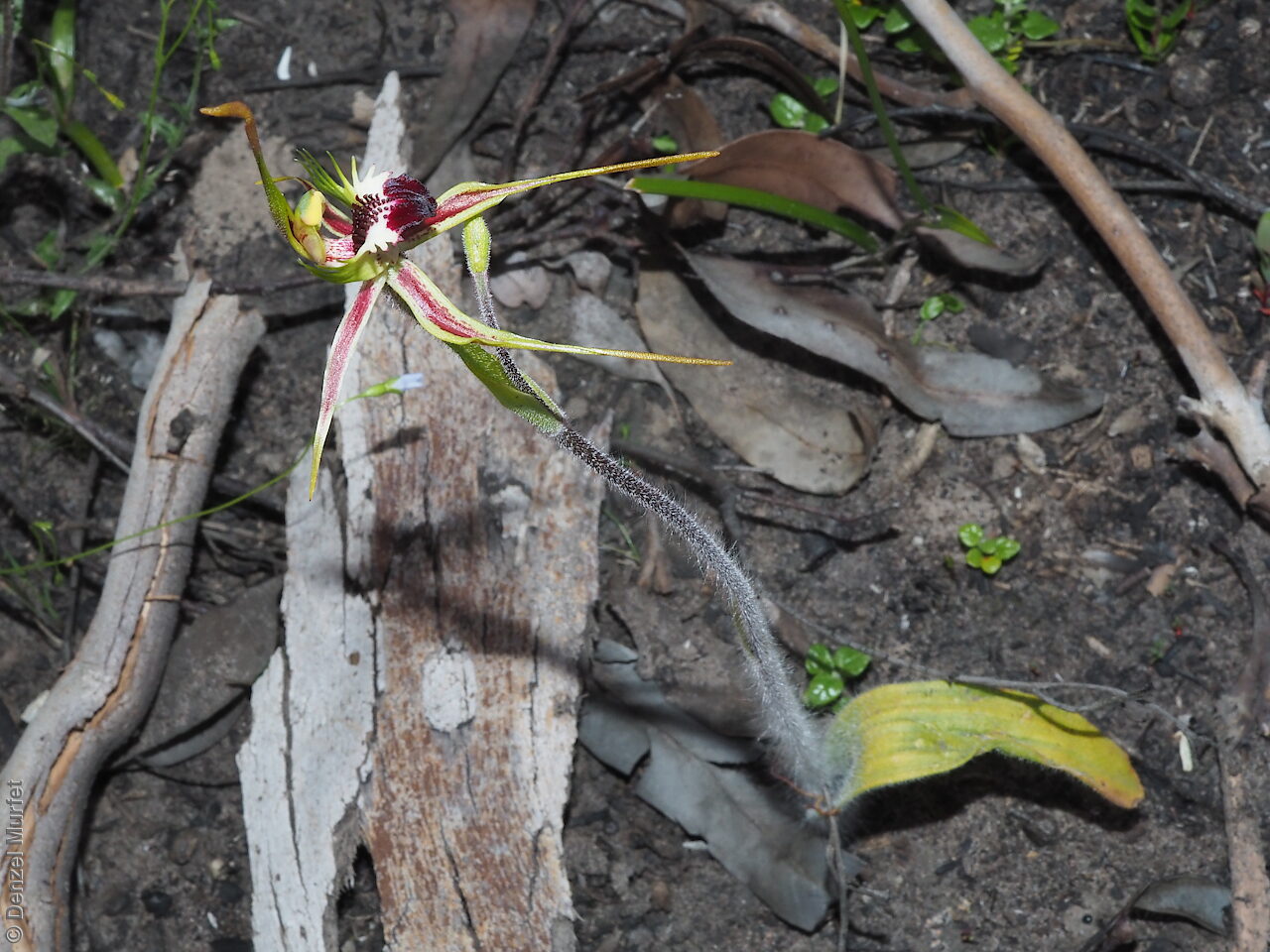
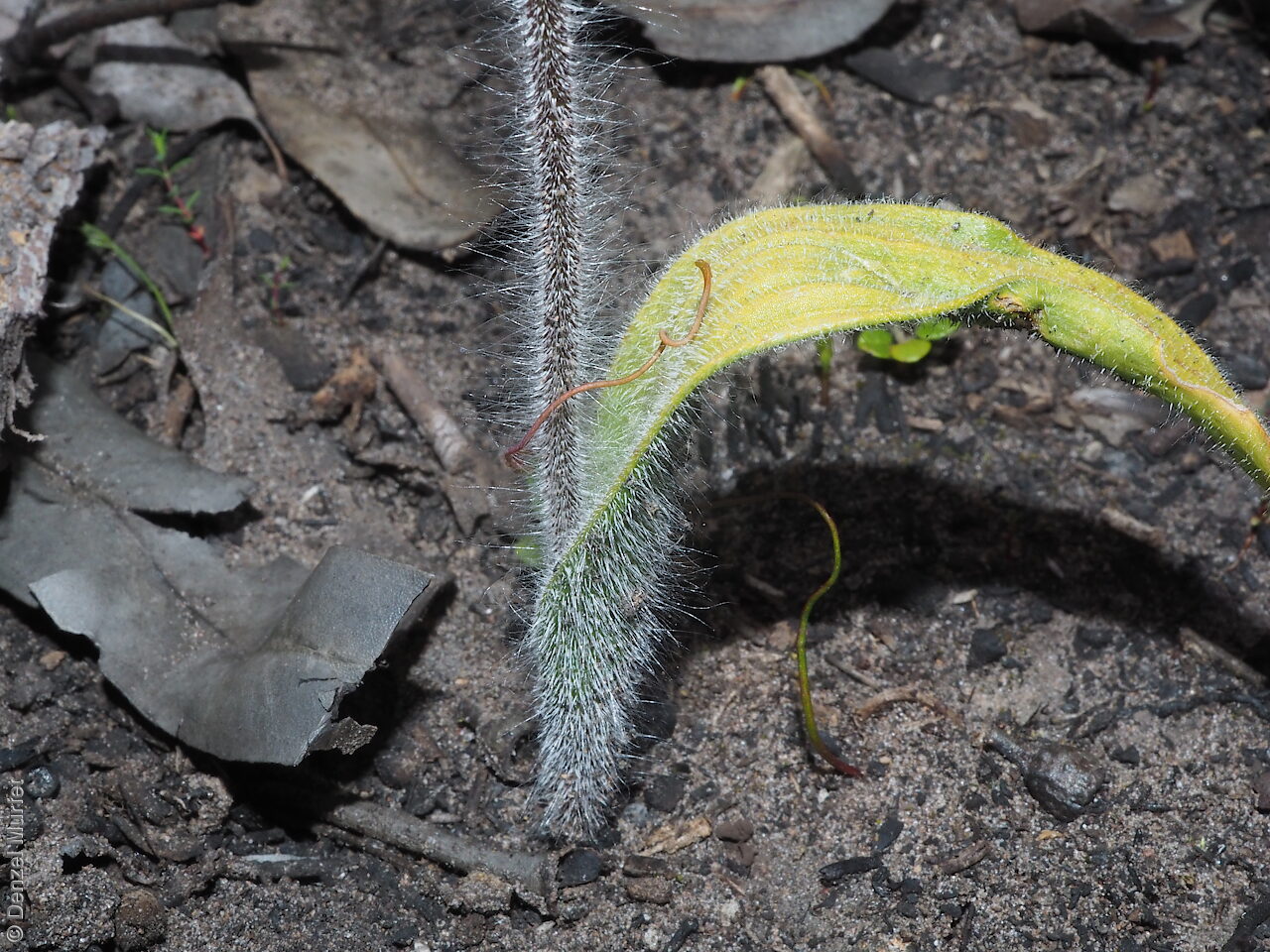
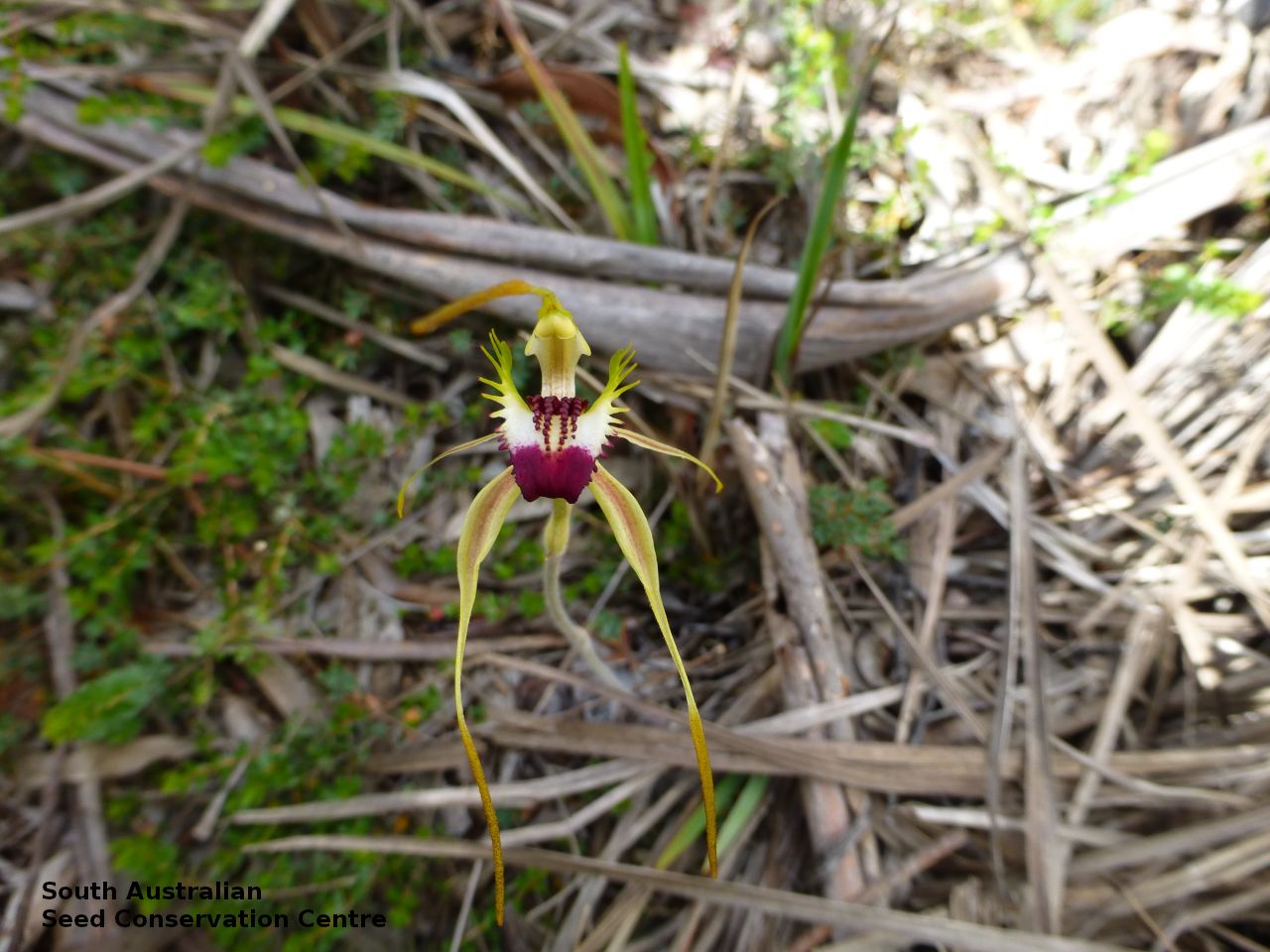
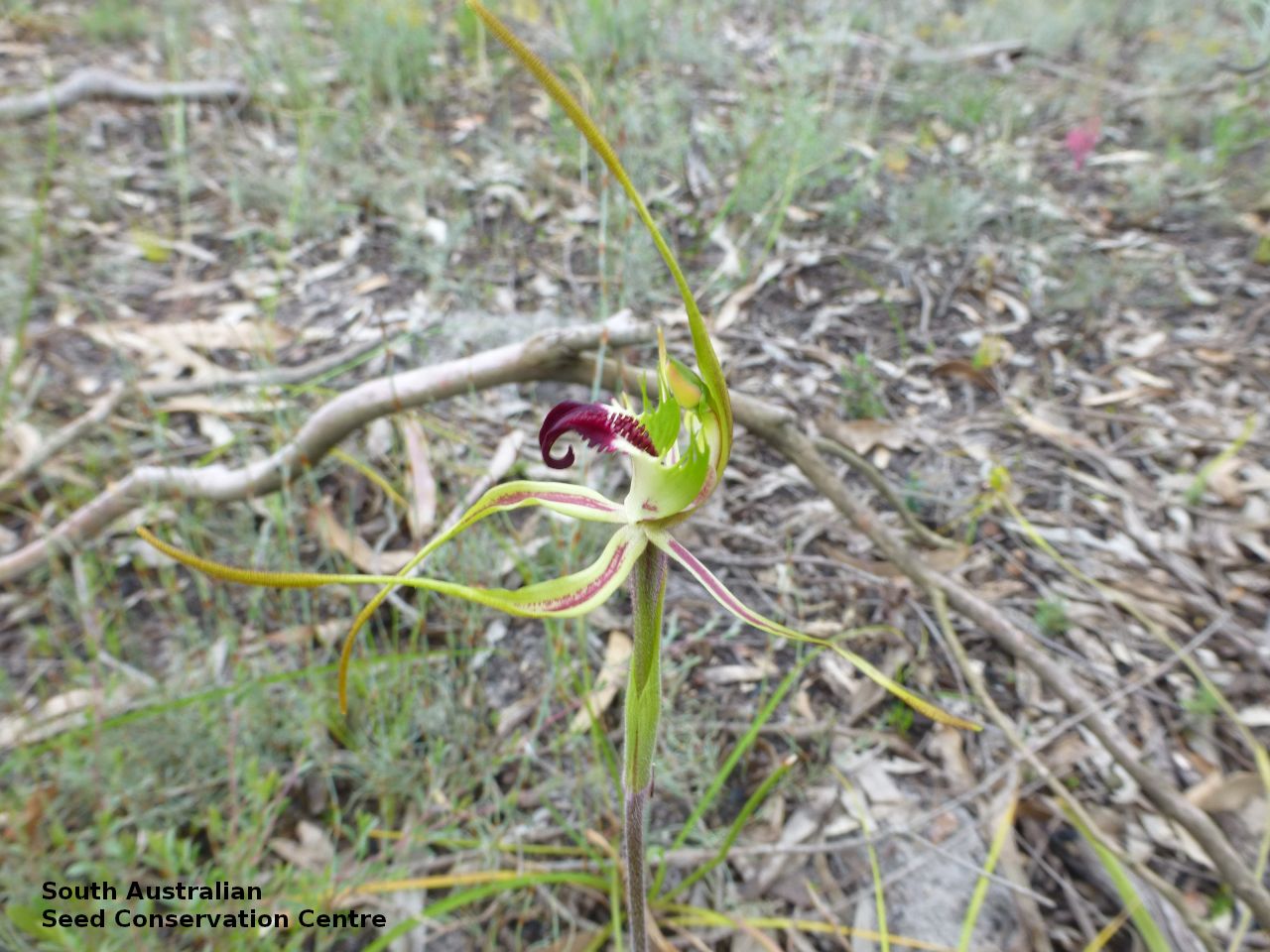
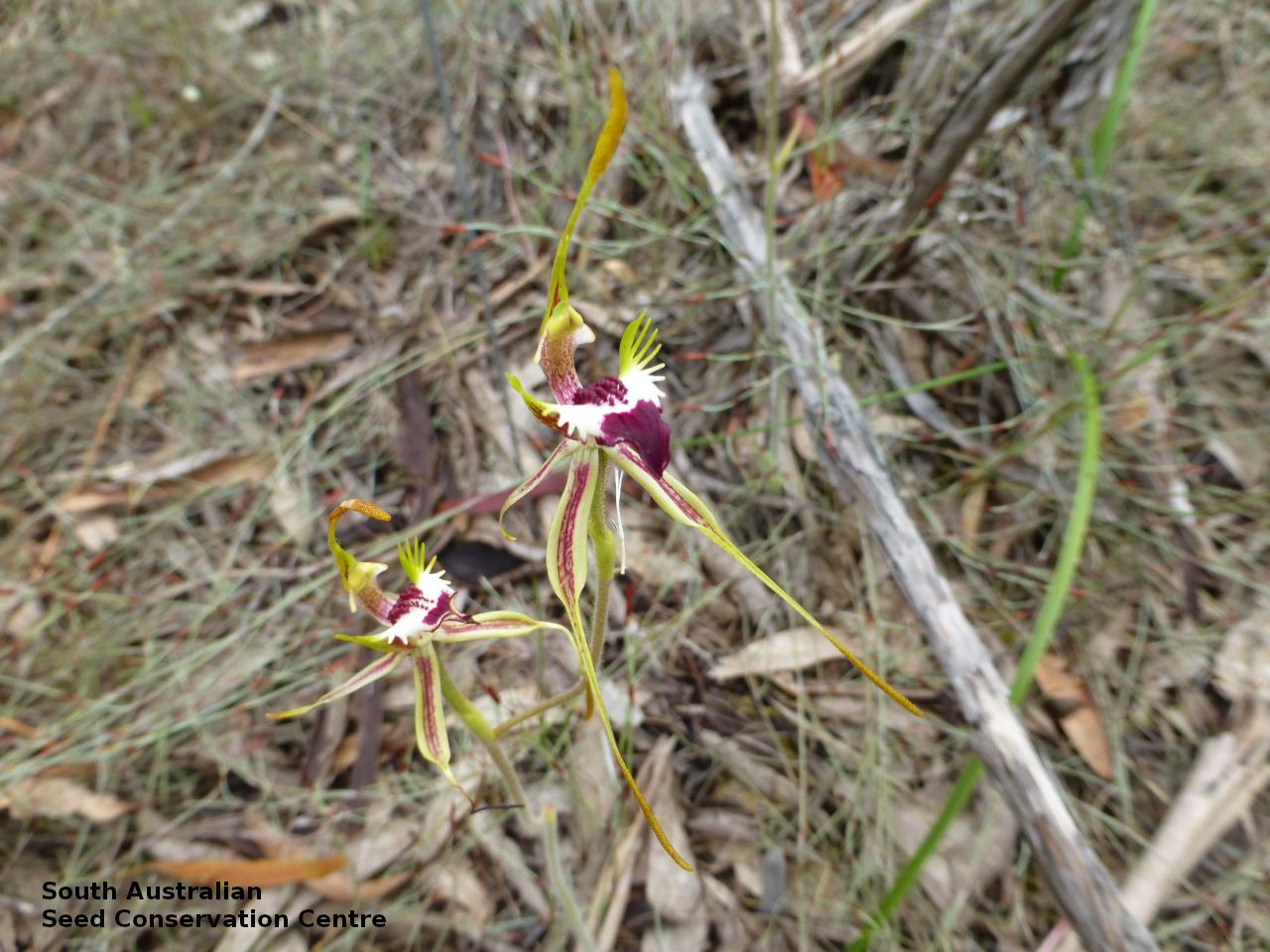
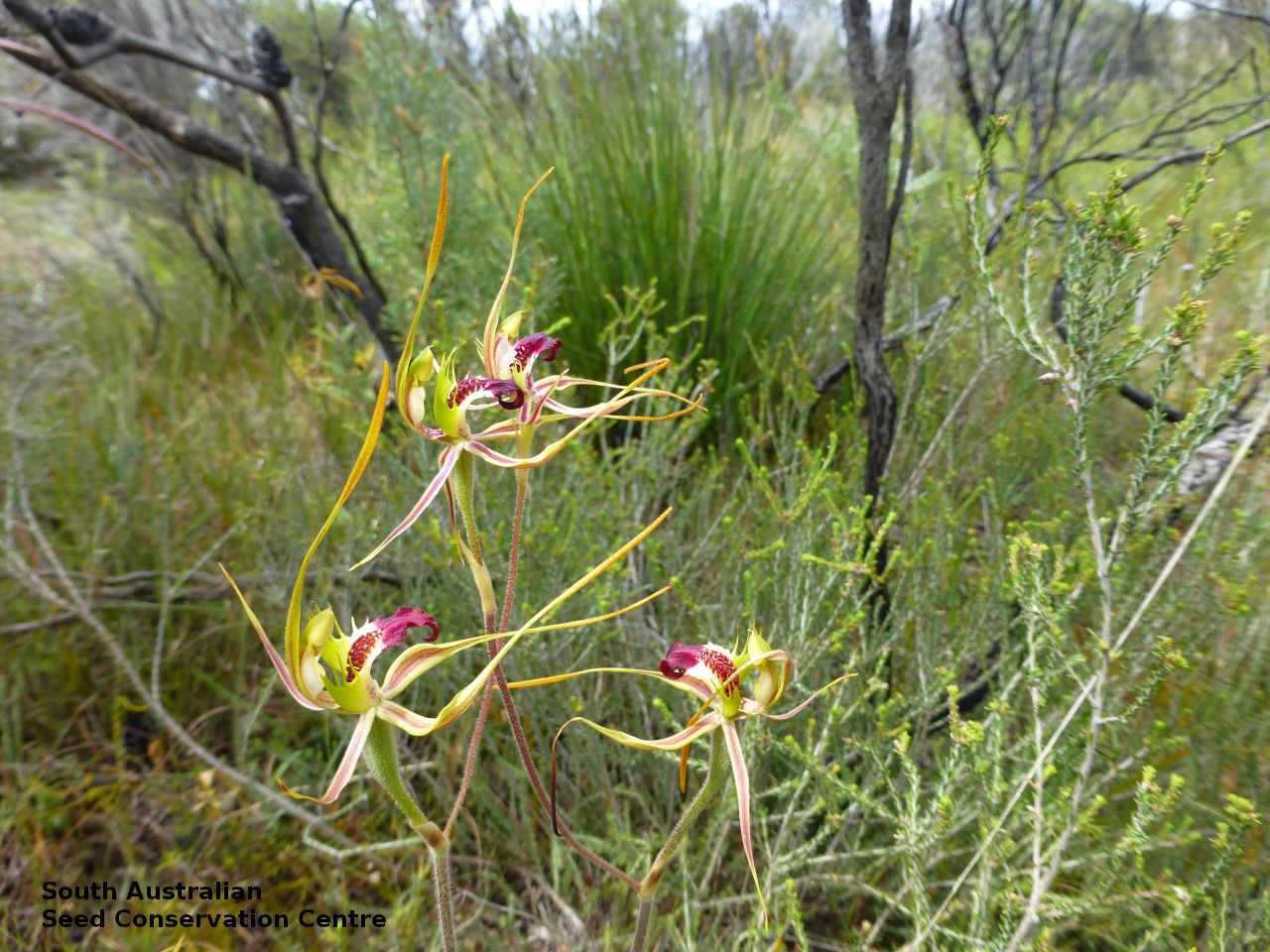
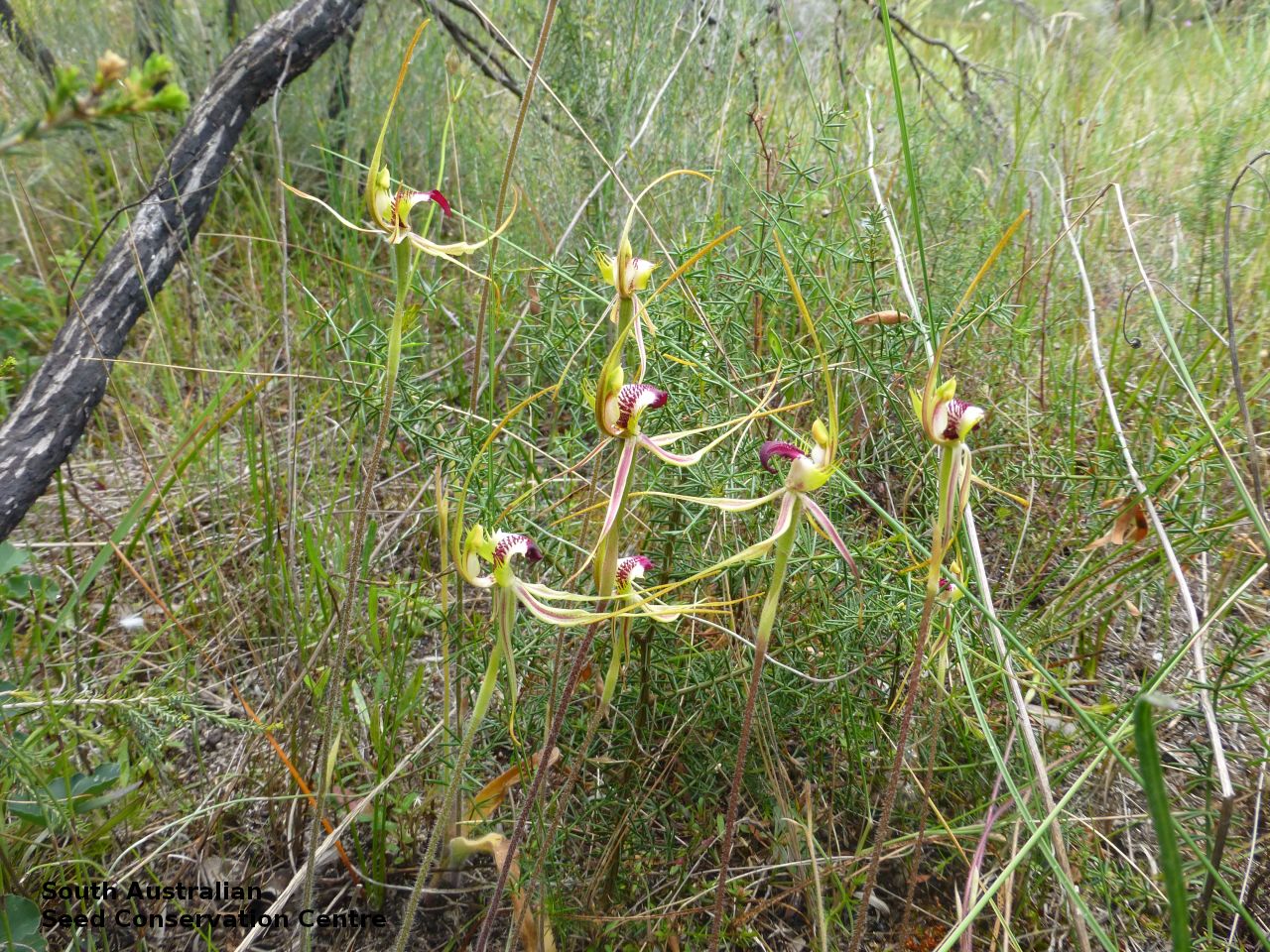
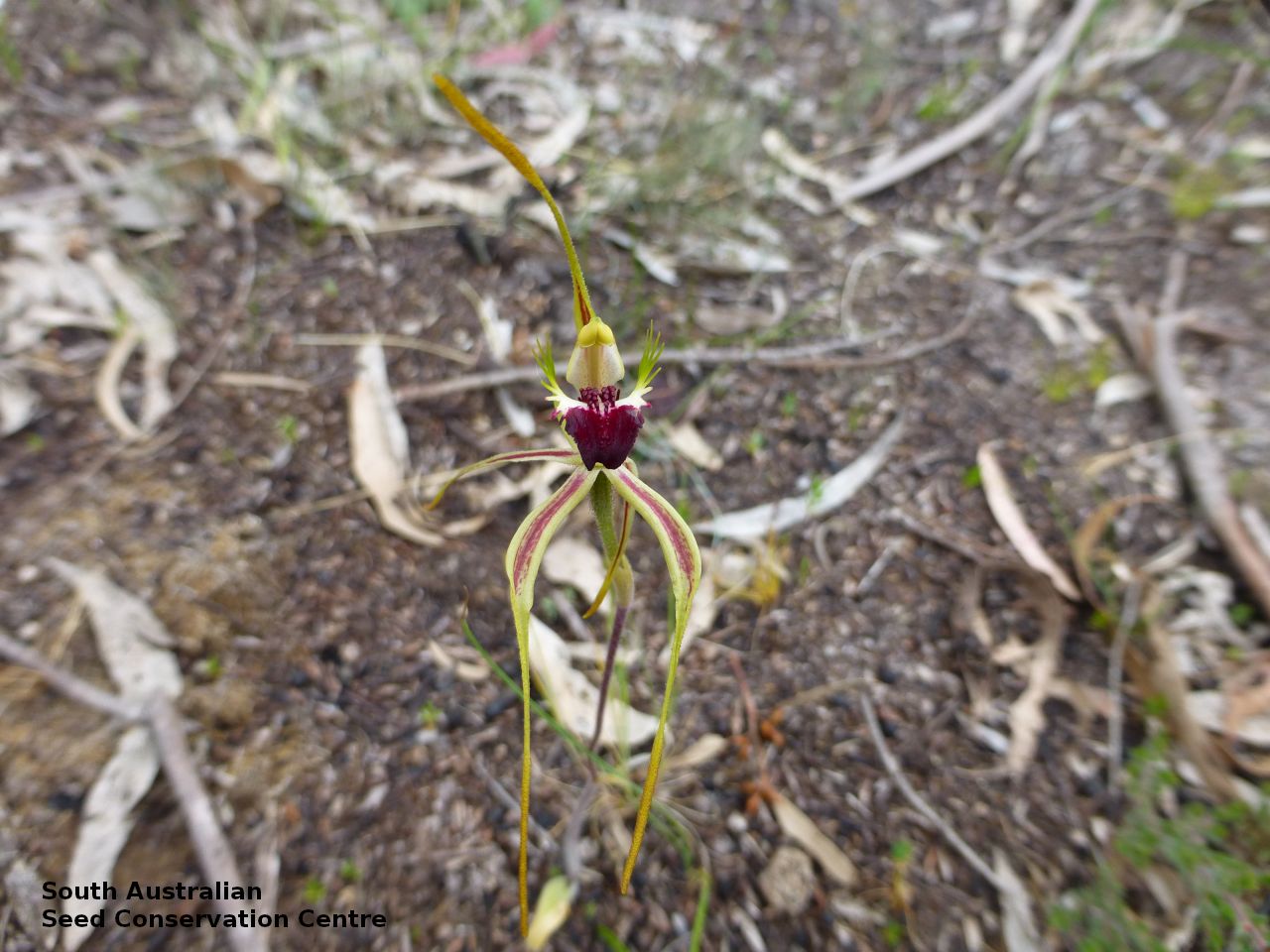
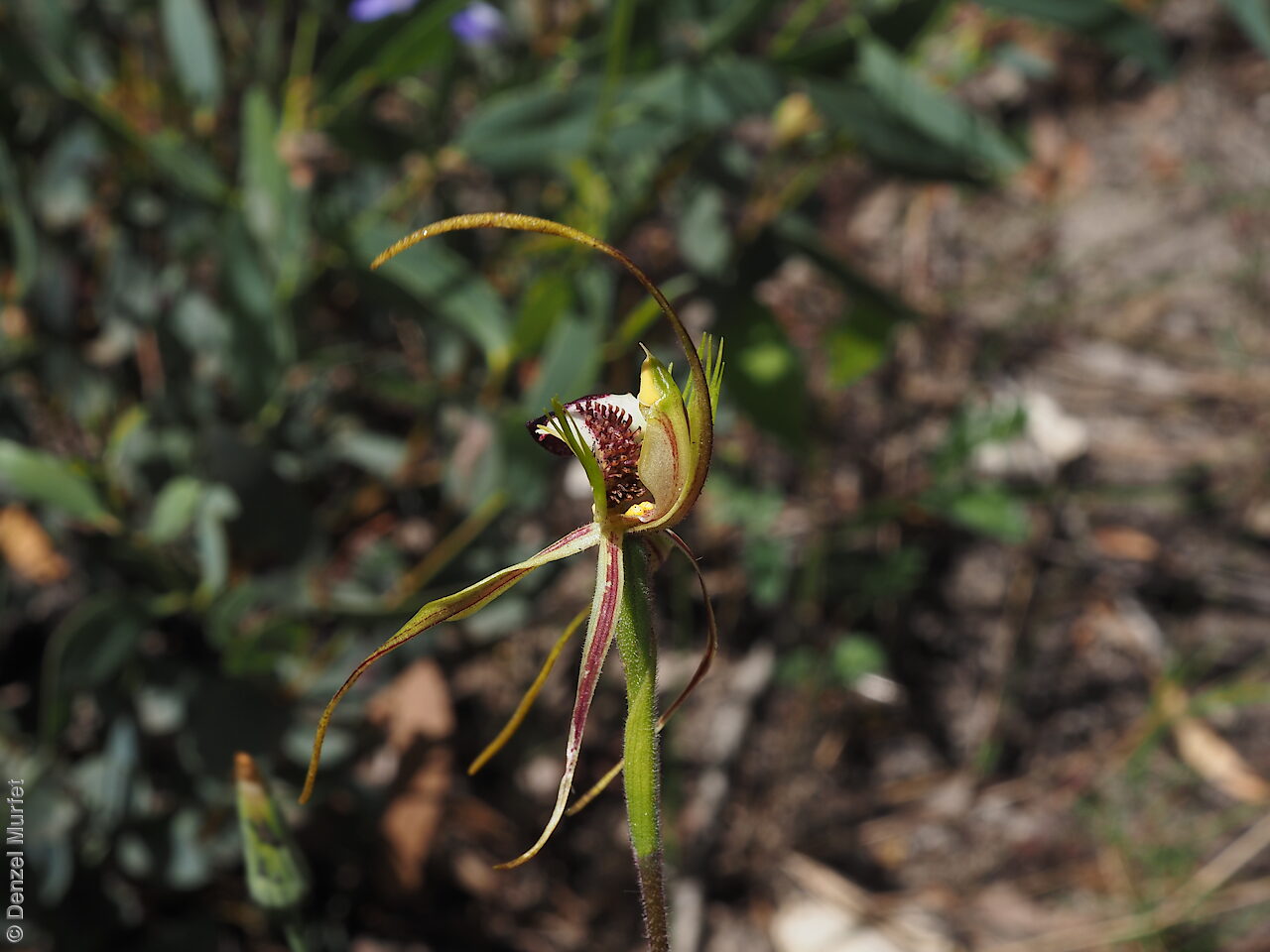
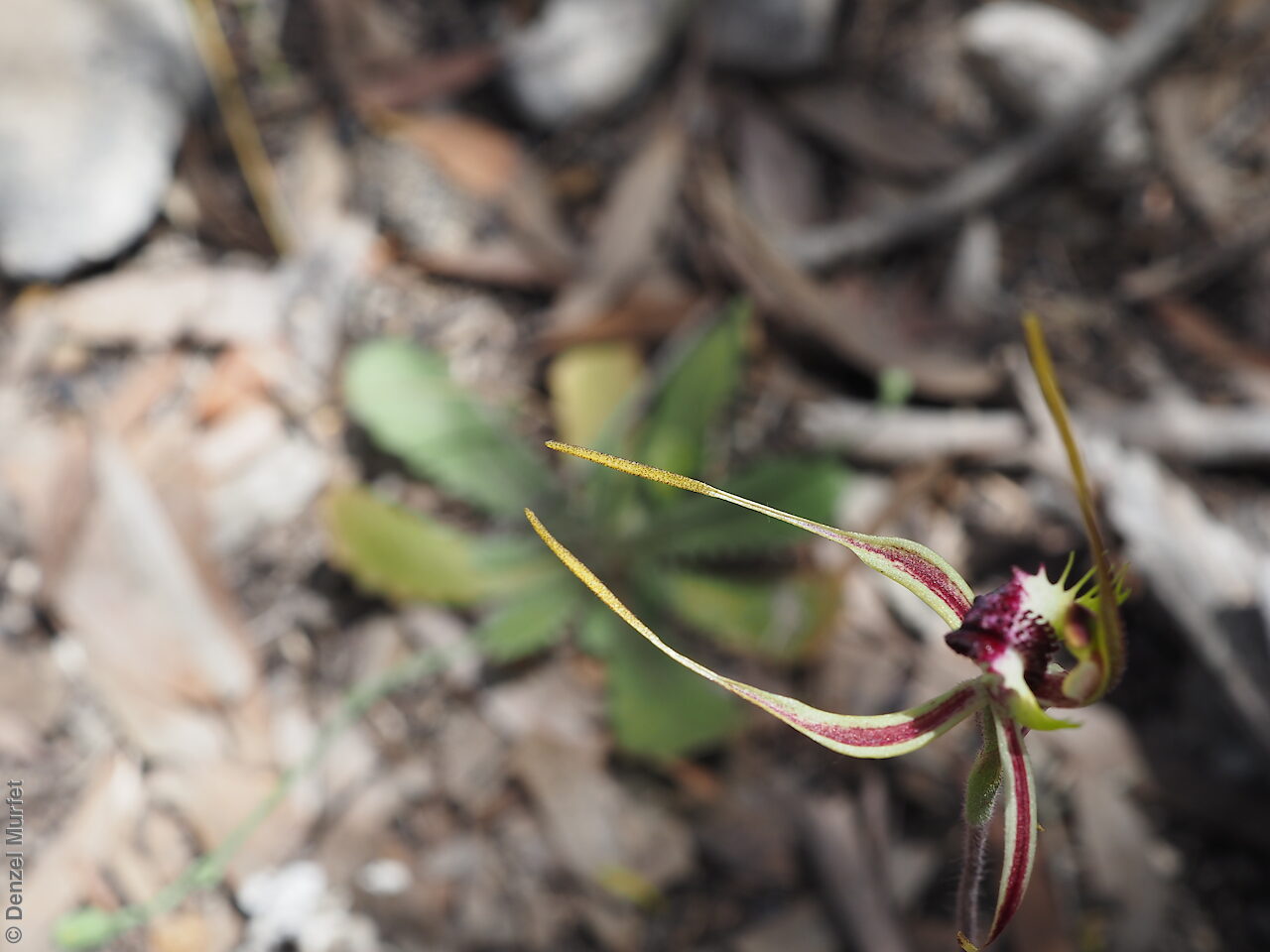
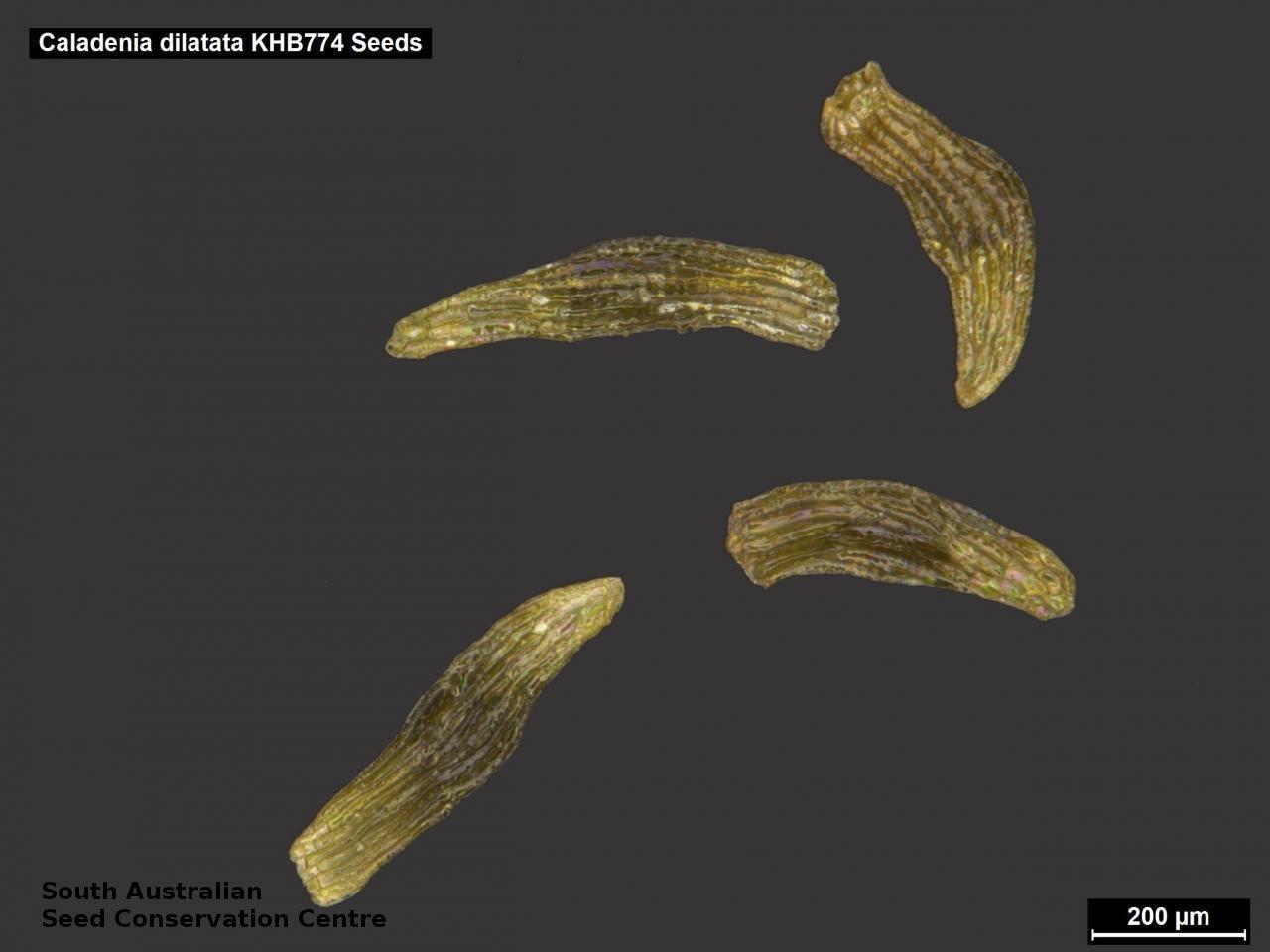
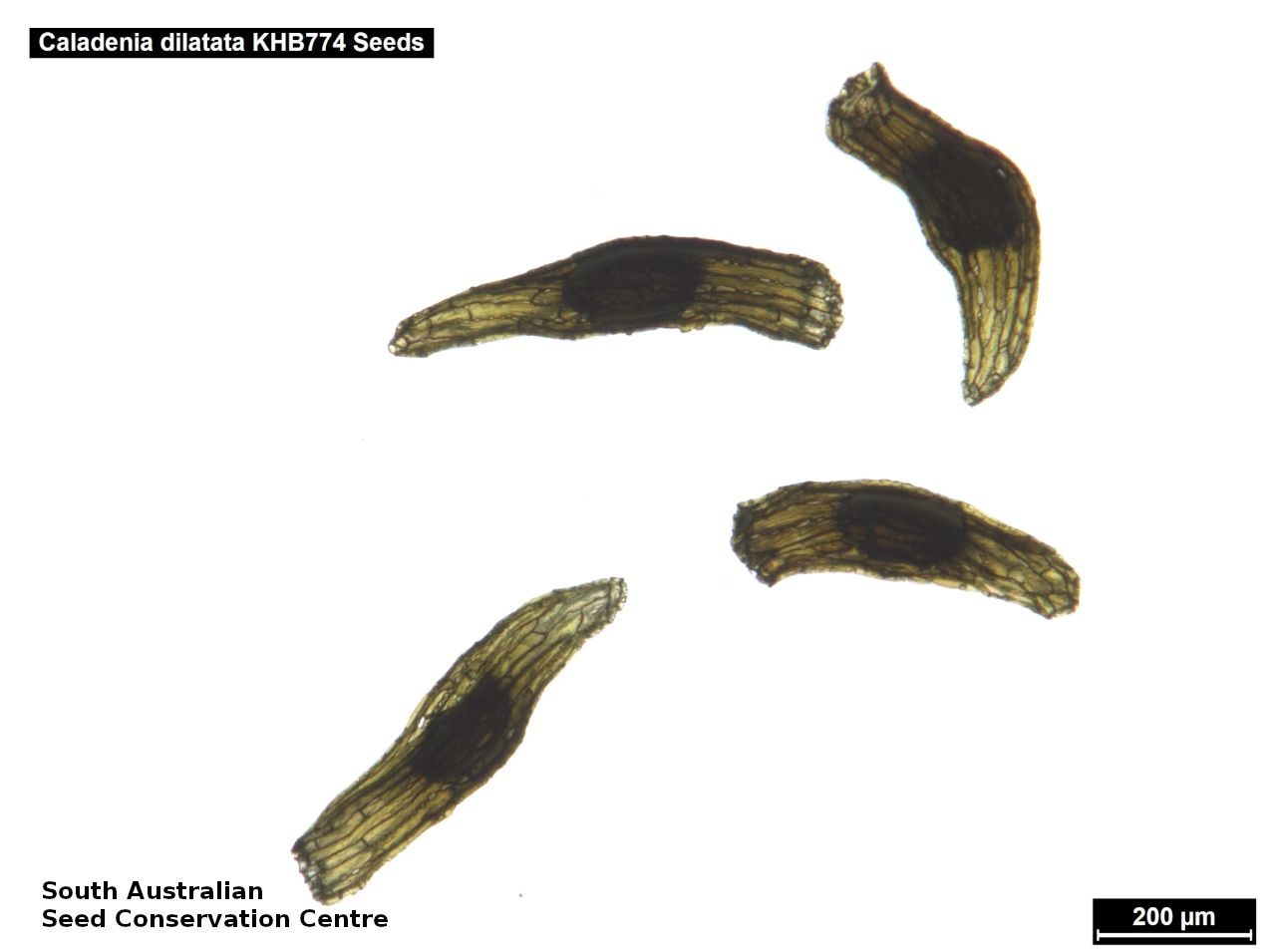


Botanical art
Prior names
Arachnorchis dilatata
Common names
Late Spider-orchid
Etymology
Caladenia from the Greek 'callos' meaning beauty and 'aden' meaning a gland, referring to the colourful labellum and the glistening glands at the base of the column that adorn many of the species. Dilatata from the Latin 'dilatare' meaning widen, dilated or expanded, referring to the spreading segments of the sepals which have expanded glandular tips.
Distribution and status
Found in the South-east in South Australia, growing in heathlands and coastal scrublands, often in areas of high rainfall or in dry exposed environments in a variety of soil types. Also found in Victoria and Tasmania. Native. Very rare in South Australia. Common in the other States.
Herbarium region: South Eastern
AVH map: SA distribution map (external link)
Plant description
Annual terrestrial orchid growing from an underground tuber to 40 cm tall, with a single flower (rarely two). It has a single basal leaf to 6 cm long, oblong to elliptical or lanceolate and hairy. The flower is 20-80 mm mostly green with variable crimson median stripes on the sepals, the labellum is white with green lateral lobes, a maroon tip and calli. This is part of a complex of similar species but can be distinguished by its late flowering time, moderately large flowers and flattened clubs on both the petals and sepals. Flowering between October and November. Fruits are brown papery ellipsoid capsule. Seeds are very small brown ellipsoid seed with a long cylindrical translucent brown mesh-like covering.
Seed collection and propagation
Collect seeds between December and February. Collect fat capsules as they start to dry and turn brown. Pods will split and release the seeds quickly and will require monitoring. To increase the chances of collecting mature pods, it is recommended that a small breathable bag (ie. Organza bags) be used to enclose the developing capsules. Place the capsules in a container that will hold fine seeds and leave to dry for a few weeks or until the capsule split. Then carefully hold the capsule and tap it gently to release the seeds. Store the seeds with a desiccant such as dried silica beads or dry rice, in an air tight container in a cool and dry place, refrigerator or in liquid nitrogen. For the NVC South East Orchid Project two populations consisting of more than 200 individuals in total were recorded from the Geegeela and Big Heath Conservation Parks. Approximately 328,000 seeds (0.22 g) were banked from these populations. Seed viability ranged from 60% to 75%. Seed germination in Caladenia species is difficult without compatible mycorrhizal fungi.
| Location | No. of seeds (weight grams) | Number of plants | Date collected | Collection number Collection location | Date stored | % Viability | Storage temperature |
|---|---|---|---|---|---|---|---|
| BGA | 250,000 (0.171 g) | 10+ | 12-Oct-2013 | KHB774 South Eastern | 1-Nov-2016 | 74% | -80°C |
| BGA | 70,000 (0.053 g) | 4 pods | 13-Jan-2014 | DJD2805 South Eastern | 1-Nov-2016 | 60% | -80°C |
Number of plants: This is the number of plants from which the seeds were collected.
Collection location: The Herbarium of South Australia's region name.
% Viability: Percentage of filled healthy seeds determined by a cut test or x-ray.